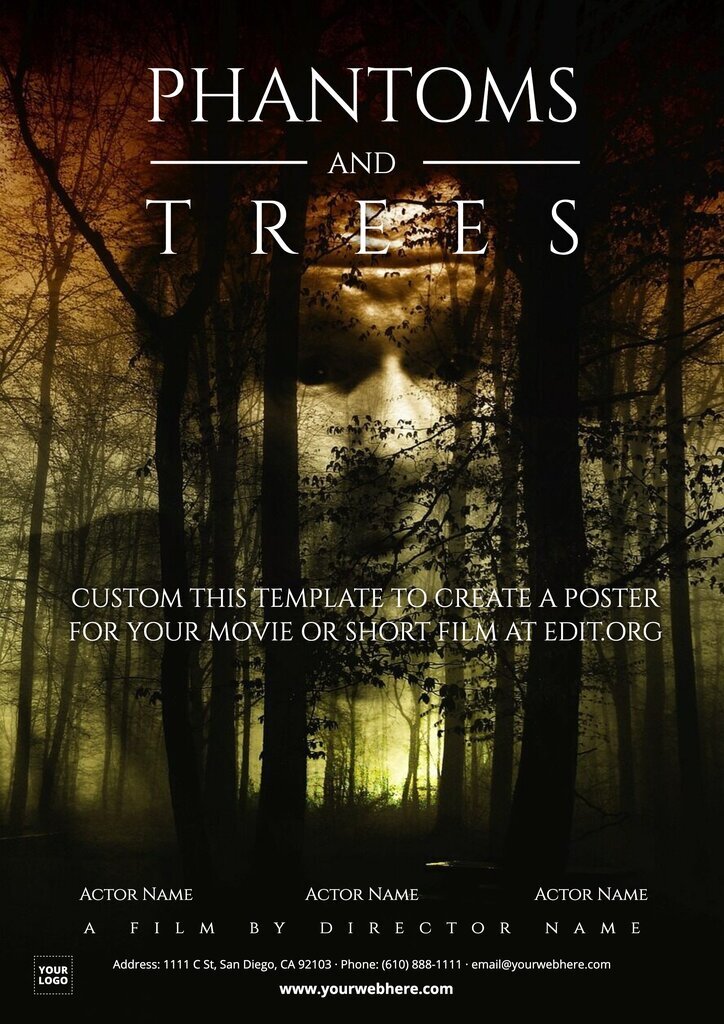Unleashing Creativity: How AI Movie Poster Generators are Redefining Film Marketing
Unleashing Creativity: How AI Movie Poster Generators are Redefining Film Marketing
Blog Article

In an era where visual storytelling is paramount, the role of film marketing has evolved dramatically. Movie posters have long been the first glimpse audiences have of a film, setting the tone and generating excitement. With the rapid advancement of artificial intelligence, the traditional methods of creating these promotional pieces are being transformed. The advent of AI movie poster generators is empowering filmmakers, marketing teams, and even independent artists to explore new creative avenues like never before.
These innovative tools leverage machine learning algorithms to produce stunning and unique designs that capture the essence of a film. By analyzing countless data points, including style, genre, and current trends, AI movie poster generators can create eye-catching visuals that might take human designers much longer to produce. This democratization of design not only streamlines the marketing process but also opens up exciting possibilities for creative expression in the film industry. As we delve deeper into the impact of these tools, it becomes clear that AI is not merely a technological advancement; it is a catalyst for unleashing creativity in film marketing.
View Details
The Rise of AI in Film Marketing
The film industry has always been at the forefront of embracing new technologies to enhance storytelling and engage audiences. As digital transformation accelerates, AI has emerged as a powerful tool in film marketing. From predictive analytics to personalized content, the integration of AI is reshaping how studios approach promotion. With the ability to analyze vast amounts of data, AI can optimize strategies and deliver more targeted campaigns that resonate with specific demographics.
One of the most exciting developments has been the rise of AI movie poster generators. These tools utilize machine learning algorithms to create visually striking posters that reflect the essence of a film. By analyzing successful design elements from existing posters, these generators can produce creative concepts quickly, reducing the time and effort needed during the marketing process. This means filmmakers can experiment with various styles and themes, ultimately leading to more innovative and captivating promotional materials.
Moreover, the AI movie poster generator also democratizes creativity in film marketing. Independent filmmakers, who may lack access to expensive design resources, can leverage these tools to produce professional-quality posters. This not only levels the playing field but also allows diverse voices and stories to reach wider audiences. As the technology continues to evolve, it promises to further enhance the creative landscape of film marketing, making it more accessible and dynamic than ever before.
How AI Movie Poster Generators Work
AI movie poster generators utilize advanced machine learning algorithms to create visually appealing designs tailored to a film's theme and genre. These systems are trained on vast datasets of existing movie posters, allowing them to recognize patterns in color schemes, typography, and imagery. By analyzing common features across different styles, the AI can generate unique posters that reflect industry standards while incorporating creative elements that capture the essence of the film.
When a user inputs details about a movie—such as its title, genre, and key imagery—the generator processes this information to formulate a design that aligns with the project’s vision. The AI evaluates various design components, including layout options, font choices, and visual motifs, to produce several poster variations. This iterative process allows filmmakers and marketers to experiment with different styles and concepts rapidly, significantly speeding up the creative workflow.
Moreover, these tools often include user-friendly interfaces, enabling even those without design expertise to generate high-quality posters. By leveraging AI's capacity for rapid prototyping and design iteration, movie studios can explore diverse aesthetic approaches and engage audiences more effectively. This technological integration not only enhances creativity but also allows for a more tailored marketing strategy that resonates with target demographics.
Impact on Audience Engagement and Film Success
The rise of AI movie poster generators has transformed the way films engage with their audiences even before the official release. These tools allow filmmakers to create visually stunning and diverse posters that can resonate with various demographic groups. By tapping into data-driven aesthetics, studios can tailor their promotional materials to appeal more directly to target audiences. This personalized approach allows films to capture attention in an oversaturated market, ultimately enhancing audience anticipation and interaction.
Moreover, the ability of AI movie poster generators to produce a multitude of designs in a short timeframe fosters a space for experimentation and creativity. Filmmakers can explore different styles, color palettes, and themes, ensuring they find the perfect representation of their film's essence. This flexibility helps create buzz and conversation around the film, as audiences discuss and share their favorite designs across social media platforms. Engaging with fans through visually compelling content builds a community around the film, increasing the likelihood of box office success.
Lastly, successful movie marketing hinges on the initial visual impression that draws viewers in. AI-generated posters can often garner more clicks and shares compared to traditional designs, due to their innovative and fresh aesthetic appeal. As these posters circulate online, they create a sense of excitement and curiosity that can drive ticket sales. By harnessing the power of AI, filmmakers not only enhance their marketing strategies but also contribute to redefining how films are perceived and celebrated in a digital-first landscape.
Report this page